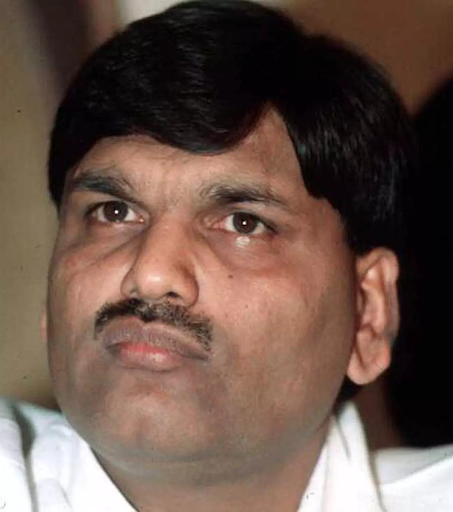Introduction:
Financial markets, often heralded as the engines of economic growth and wealth creation, have occasionally been marred by intricate webs of deceit and manipulation. Across different epochs and geographies, notable individuals and corporations have engaged in sophisticated schemes to exploit vulnerabilities, leaving an indelible mark on the history of stock market manipulation. In this exploration, we unravel the narratives of infamous figures such as Harshad Mehta, Charles Ponzi, and Bernie Madoff, alongside corporate giants like Enron, WorldCom, and Tyco International. Each chapter in this dark saga contributes to our understanding of the diverse methods employed to deceive investors, the far-reaching repercussions of such manipulations, and the ongoing quest for regulatory frameworks to safeguard the integrity of financial markets. As we delve into the intricate details of these cases, we confront the harsh realities of trust betrayed, fortunes lost, and lessons learned in the turbulent landscape of stock market manipulation.
Let's further explore each case in greater detail:
1. Harshad Mehta:
Method: Harshad Mehta exploited the banking system through a technique known as "Ready Forward" transactions, manipulating the stock market. He used bank receipts to falsely enhance the reserves of banks, leading to a surge in the Bombay Stock Exchange (BSE).
Impact: The BSE Sensex skyrocketed from around 1,000 points to over 4,500 points during the scam. Mehta's manipulation involved staggering amounts, with estimates suggesting the scam amounted to over ₹4,000 crores (around $500 million). The aftermath witnessed a severe market crash, eroding investor wealth and trust.
2. Charles Ponzi:
Method: Charles Ponzi's scheme revolved around the promise of high returns derived from international reply coupons. He attracted a large number of investors by offering returns of 50% within 45 days or 100% within 90 days.
Impact: Ponzi's scheme attracted around 30,000 investors, accumulating an estimated $20 million (equivalent to around $250 million today). When the scheme collapsed in 1920, investors suffered immense losses, with many receiving only a fraction of their invested funds.
3. Enron Scandal:
Method: Enron, once a Wall Street darling, engaged in accounting fraud to inflate profits. The company used off-balance-sheet entities to hide debt and manipulate financial statements.
Impact: At its peak, Enron's market capitalization reached $68 billion. However, when the fraud was exposed in 2001, the market value plummeted, resulting in over $74 billion in shareholder losses. Thousands of employees lost their jobs, and the scandal triggered widespread distrust in corporate governance.
4. WorldCom Accounting Fraud:
Method: WorldCom engaged in one of the most significant accounting scandals in U.S. history. The company inflated profits by capitalizing normal expenses, thereby overstating assets and masking its financial troubles.
Impact: The accounting fraud amounted to $11 billion, and WorldCom filed for bankruptcy in 2002. This bankruptcy was the largest in U.S. history at the time, causing severe losses for investors and leading to increased scrutiny of corporate financial practices.
5. Tyco International Fraud:
Method: Tyco executives, including CEO Dennis Kozlowski, engaged in corporate fraud by stealing millions through unauthorized loans and inflated executive bonuses. The fraud also involved manipulating financial statements to hide the illicit activities.
Impact: Tyco's market value plummeted from $120 billion to $25 billion. The scandal resulted in criminal charges against top executives, including Kozlowski and CFO Mark Swartz. The company paid $2.92 billion in settlements to shareholders to resolve the legal fallout.
6. Bernie Madoff Scandal:
Method:Bernie Madoff orchestrated one of the largest Ponzi schemes in history, promising consistent high returns to investors. He used funds from new investors to pay returns to earlier investors without engaging in any legitimate investments.
Impact: Madoff's scheme, spanning several decades, led to estimated losses of $65 billion. The impact was widespread, affecting individuals, charities, and even celebrities. The scheme collapsed during the 2008 financial crisis, revealing the extent of the fraud.
In each case, the manipulation of the stock market involved intricate schemes, deceptive practices, and, ultimately, devastating consequences for investors, employees, and the broader financial system. These scandals underscore the importance of robust regulatory frameworks, transparency, and ethical corporate practices to safeguard the integrity of financial markets.
Conclusion:
The annals of stock market manipulation, as chronicled through the exploits of figures like Harshad Mehta, Charles Ponzi, and the corporate giants Enron, WorldCom, and Tyco International, are a testament to the enduring challenges of preserving market integrity. These cases illuminate the multifaceted methods employed to manipulate stock markets, ranging from deceptive accounting practices to elaborate Ponzi schemes. As we reflect on this dark chapter, several overarching themes emerge.
Firstly, the perennial cat-and-mouse game between manipulators and regulators underscores the need for continual vigilance and adaptability in regulatory frameworks. Despite advances in surveillance technologies and regulatory responses, the dynamic nature of financial markets presents an ongoing challenge in staying ahead of evolving manipulation tactics.
Secondly, the far-reaching impact of stock market manipulation extends beyond financial losses. These episodes erode investor trust, disrupt markets, and, in extreme cases, lead to economic downturns. The consequences are not confined to balance sheets; they reverberate through the broader economy, affecting individuals, employees, and the public's confidence in the financial system.
Furthermore, the cases explored reveal the importance of transparency, ethical corporate practices, and robust governance. The absence of these principles creates an environment ripe for exploitation, inviting unscrupulous individuals and entities to capitalize on regulatory blind spots and lax oversight.
In conclusion, the history of stock market manipulation serves as a cautionary tale. It reminds us of the perpetual need for a resilient and adaptive regulatory infrastructure that anticipates emerging risks. As we navigate the complexities of modern financial markets, the lessons from these scandals underscore the imperative of fostering transparency, ethical conduct, and a culture of compliance. Only through these measures can we hope to mitigate the risks and protect the sanctity of financial markets, ensuring they remain engines of economic growth and prosperity rather than arenas of deception and disillusionment.







Comments